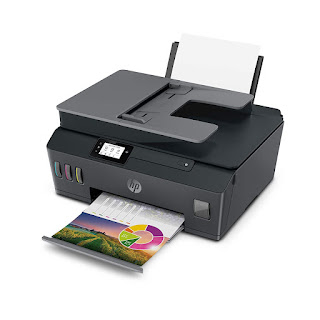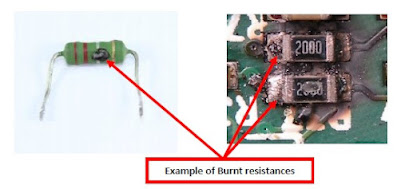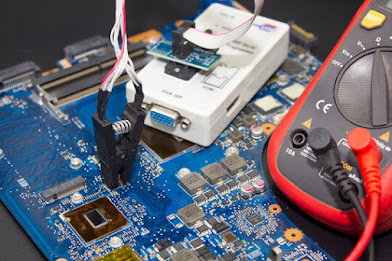What is computer hardware and software
There are 2 components to each computer system: hardware and software. In computing, hardware refers to the outwardly visible components, such as the display, central processing unit (CPU), input devices, and the like. As opposed to hardware, which consists of physical components, the software is the collection of instructions that tells that hardware how to carry out a given set of tasks.

To be successful as a computer software engineer, a thorough understanding of computer hardware and software is essential, and this lesson provides just that. This article covers the computer's hardware and software/components in detail.
What is a computer system?
There are two primary components in a computer: hardware and software.
The computer is a piece of programmable electronic device that may be instructed to process data and produce the desired result. Binary numbers, which can either be a 0 or a 1, are the only ones that can be processed by a computer. Data is transmitted between computers one byte at a time.
All the information on the computer's hard drive is represented as binary digits, either a 0 or a 1. The American Standard Code for Information Interchange.
What is computer hardware?
The Hardware consists of multiple electronic circuits and components such as I/O devices, CPUs, discs, and motherboards.
1. Input Devices
The keyboard provides input (data, instructions) into the computer's RAM.
Trackball: the upper part of the mouse.
A Light pen
An optical Bar Code Reader, OBR, reads tags and scans vertical bars.
Optical Character Reader – OCR is used to recognize alphanumeric characters such as reading airline tickets, computer-printed bills, and credit card information.
2. Output Devices
The output devices, such as the display, deliver the result that the user provided as input.VDU is another name for monitor Visual display unit. It contains a CRT that outputs the character.Multiple
kinds of monitors are available on the market, including Color graphics
adapters, enhanced graphic adapters, Video graphics adapters, and Super
VGA, which is the best in the industry.

3. CPU
The central processing unit is the most important component of a computer because it is in charge of sending, receiving, and executing all data and instructions. It carries out the commands contained in the RAM.
The CPU's electrical circuits carry out the instructions from the computer's software. Data may be processed instantly to the CPU's Cache memory.
4. Storage of Memory
A memory chip or hard drive is a device on which information can be temporarily stored. There are two types of memory in learning: primary and secondary.
Primary memory consists of RAM and ROM, two types of memory directly connected to the CPU and operates at very high speeds. The CPU makes exclusive usage of these bytes of memory.
Secondary memory, such as CD-ROMs and hard drives, is a memory that is not directly connected to the CPU.
5. Motherboard
The motherboard, which functions similarly to a circuit board, is the most important piece of hardware. It's the primary PCB or printed circuit board. The central processing unit is either inserted into a socket on the motherboard or soldered onto it. Memory modules can be inserted into available slots.
6. Buses
There is a unit of storage called a register, where data is stored as a binary digit. Registers require separate lines, known as buses, to transfer data between each other.
Data is transferred via the data bus, whereas addresses and memory addresses are transmitted via the address bus.
A computer's components are all connected by a bus that uses control signals to communicate with one another.
What is Computer Software?
Computers rely on software, a collection of instructions, data, or programs designed to do particular tasks. Software deals with the attributes of a computer rather than its physical components (hardware).
The term software refers to any executable code on a computer or mobile device. It's the adaptable component of a computer, as opposed to the fixed hardware.
Application and system software are the main computer software types.
An application is a piece of software designed to perform a specific task.
System software keeps a computer running and what programs use to access its resources.
Software developers can get the tools they need to create new apps by using programming software, middleware, which acts as a bridge between the operating system and applications, or driver software, which controls hardware.
Early software was designed to run only on a single computer and was sometimes supplied alongside that machine. The sale of software on floppy discs, and later CDs and DVDs, started in the 1980s. Most software is now licensed and downloaded online.
The computer software is downloaded through software vendors' websites or application service providers.
Types of Software
The most common types of software are listed in the following categories:

1. Application software
2. System software.
3. Driver software.
4. Programming software.
5. Middleware.
How Does Software Run?
All software gives computers the instructions and information they need to function correctly and fulfill user needs. There is a clear distinction between application software and system software functions.
1. How to Work Application Software?
Application software refers to a broad category that includes various applications. Some applications are designed to serve the needs of other applications by carrying out specific functions. A computer's applications are useless without the operating system and other system software for the computer to run.
These desktop apps are saved to the user's hard drive and run from memory to perform various functions. They are stored on the local machine's hard disc and do not require an active internet connection. On the other hand, desktop software has to be compatible with the hardware it runs on.
The hardware and system software are not necessary for web applications to function; instead, all they need to get up and running is access to the internet. To this end, any device with a web browser can access and use web apps. All program components are hosted on the server, so users can access it regardless of the operating system.
2. How to Work System Software?
The term system software refers to the layer of software installed on a computer between the hardware and the actual applications. Users don't have to direct interaction with system software because it operates invisibly in the background. So that higher-level application software can execute and do user-defined tasks.
This software organizes the interaction between a computer's hardware and operating system. Booting a computer triggers the execution of system software, which is active for as long as the computer is on.
Design and execution
To define the phases and activities involved in creating software, project managers typically refer to a framework known as the software development lifecycle. Designing the work, understanding the needs of the people who will use the program, and establishing explicit requirements are the first steps in the design lifecycle. The design phase follows the requirements analysis to provide more specific information about how to meet the target audience's needs.
After the development phase is finished, software testing can begin. All the work that must be done to maintain the system operational falls under the purview of maintenance.
The software design is a blueprint of the final product, detailing everything from the software's architecture to its data models, interfaces, and even algorithms.
The software design process is what converts the needs of the end-users into a format that can be read and used by the programmers who will ultimately be responsible for writing the code and putting the software into action. Computer software engineers use an iterative process to build the software, making small tweaks and adding new features at each stage.
There are different types of software designs:
1. Architectural design
This is the first design phase, where the system's architecture, key components, and interdependencies are mapped out with the help of architectural design software.
2. High-level design
The second level of design considers how the system and its constituent parts can be built as modules backed by a software stack. Data flow, the system's components and their interconnections are described at a high level in the design.
3. Detailed design
The third design level concerns the details of putting the planned architecture into action.
How to maintain software quality?
The quality of the software is evaluated by analyzing how well it accomplishes its stated goals and any additional non-functional objectives.

Quality attributes, often non-functional requirements, specify how a system should operate. Usability, privacy, security, and disaster recovery are all examples of desirable but non-essential features.
Technical problems in the software's source code are found and fixed during the testing phase. The product's usability, performance, security, and compatibility are evaluated to guarantee they are in line with expectations.
Features of high-quality software:
Accessibility.
Compatibility.
Efficiency.
Functionality.
Ability to install
Adaptability
Security
Formal verification
Readability
Maintainability
Portability
Localization
Stability and flexibility
Once a software application has been launched, the developers must keep it up to date with the latest client demands and fix any issues that users may encounter. This includes enhancing functionality, squashing bugs, and making other changes to the code that will hopefully prevent future problems.
The duration of time a product remains available on the market is proportional to the diligence with which its creators attend to these sorts of upkeep issues.
These days, computer software is available in a variety of human languages to meet the needs of each community or region, such as software in Hindi, Chinese software, French software, and many others.
Computer software Patents and Licenses
The distribution and usage of software are governed by the terms of a license, which is a legally enforceable agreement.
As a rule, software licenses allow for making multiple copies of the program without triggering any copyright violation. The license specifies each party's obligations and may impose usage limits on the licensed software.
Program license agreements include liability limitations, warranties, disclaimers, and restrictions if the program infringes on others' intellectual property rights.
Proprietary and open source software licenses are the two most frequent software licenses.

Proprietary software license
It does not leave the ownership of the company, group, or individual that developed it, and for free software, which allows users to run, study, modify, and distribute the software.
Open source software license
It's a system software where the source code is publicly available to users, and the final product is developed by group effort. Open source software licenses give users the same rights as free software, allowing them to run, copy, share, and modify the software.
The practice of selling software licenses on a one-time basis has been replaced by the software-as-a-service subscription model among software suppliers over the past two decades. Customers pay the software suppliers a subscription fee to use the software once it has been hosted in the cloud by the software vendor. Customers access the program through the internet.
Copyright prevents others from duplicating a developer's code, but it doesn't stop them from independently developing the same software.
A patent allows creators to ban others from using the software's core elements, even if they developed the software independently.
More technical software is patentable. A software product could be patented if it provides a novel database structure or improves computer performance.






Comments
Post a Comment